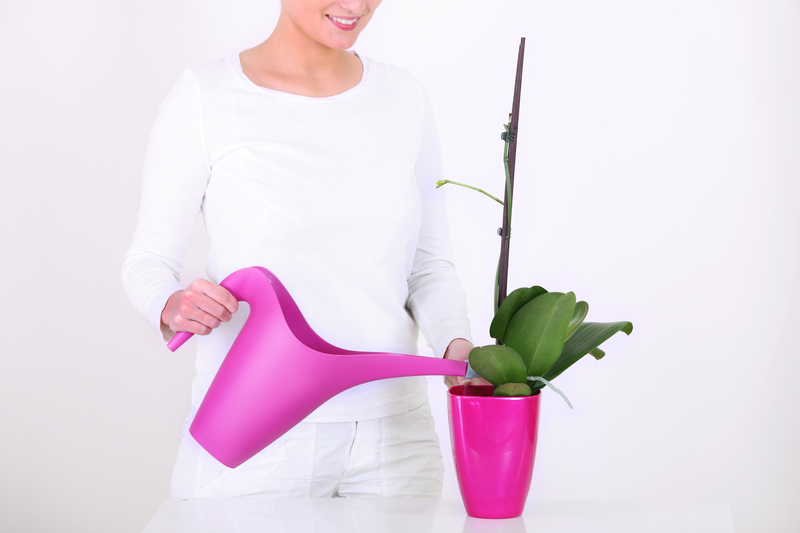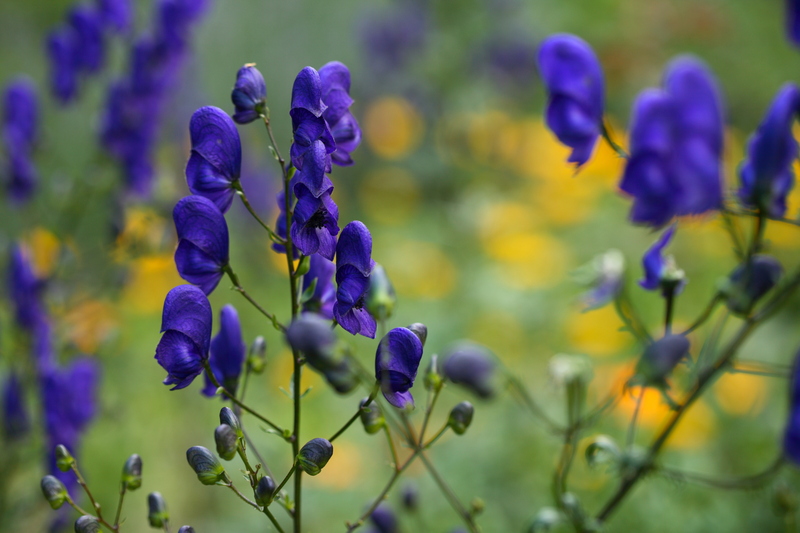Elevate your green thumb skills with container gardening
Posted on 20/09/2025
Elevate Your Green Thumb Skills with Container Gardening
Are you eager to nurture your love for plants but don't have sprawling garden beds? Container gardening is the perfect way to flex your green thumb skills, no matter how much space you have. Whether you live in an urban apartment or want to add lush beauty to your patio, container gardens offer both versatility and creative control. Let's explore how you can transform your gardening abilities and elevate your home with flourishing potted plants!
Why Choose Container Gardening?
Container gardening--sometimes known as pot gardening or gardening in containers--has surged in popularity for a reason. It opens up a world of possibilities for gardeners:
- Space-saving: Ideal for balconies, patios, small yards, and even windowsills.
- Mobility: Move your plants to chase sunlight, avoid frost, or redecorate your outdoor space at will.
- Enhanced control: Customize soil blends, moisture levels, and plant combinations for optimal growth.
- Versatility: Grow decorative flowers, lush foliage, fresh herbs, or even a productive edible garden on your porch or deck.
- Pest and disease management: Isolating plants helps minimize problems compared to traditional beds.
Elevate your green thumb further by experimenting with new species, innovative designs, and creative planting techniques, all within the manageable ecosystem of a container.

Selecting the Best Containers for Your Garden
An essential first step to successful container gardening is choosing the right vessel. The ideal container complements your style and suits your chosen plants. Consider the following factors:
Materials
- Terracotta: Classic and breathable, but dries out quickly & may crack in frost.
- Ceramic: Glazed pots are attractive and retain moisture, but can be heavy.
- Plastic & Resin: Lightweight, affordable, and versatile, though less breathable.
- Metal: Sleek and modern, but can heat roots in strong sun.
- Wood: Rustic appearance and good insulation, but needs sealing to prevent rot.
Size
Container size directly impacts root space, water retention, and growth. A general rule: large plants need large containers, while smaller annuals or herbs are happy in compact pots. Always ensure your container has drainage holes to prevent waterlogging and root rot.
Essential Tips to Elevate Your Container Gardening Game
1. Choose the Right Soil Blend
Never use ordinary garden soil in your containers. Instead, invest in a high-quality potting mix which is lighter, drains well, and supports healthy root development. Add amendments like perlite for drainage, compost for nutrients, or coconut coir for water retention depending on your plants' needs.
2. Design with Drama and Purpose
One of the joys of container garden design is the ability to craft visually striking displays. Follow the classic "Thriller, Filler, Spiller" formula:
- Thriller: Bold, upright plants like ornamental grasses or tall flowers add height and drama.
- Filler: Mid-height plants with bushy growth fill space, such as begonias or petunias.
- Spiller: Trailing plants like ivy or sweet potato vine cascade over the pot's edge.
3. Master Watering Techniques
Plants in pots rely on you for hydration. During hot weather, containers may need daily watering--especially terracotta and small pots. Check soil moisture with your finger; water until it runs from the drainage holes. Group containers together to create microclimates and reduce evaporation.
4. Fertilize for Success
Cultivating lush, healthy plants means providing adequate nutrients. Use a balanced, slow-release fertilizer at planting time, and supplement with liquid feeds during the growing season. Be mindful not to over-fertilize, as salts can build up in containers.
The Best Plants for Container Gardens
One of the main ways to elevate your green thumb is to grow a diverse, thriving collection. Here are categories and standout choices that perform exceptionally well in pots:
Flowering Favorites
- Petunias
- Begonias
- Marigolds
- Geraniums
- Dahlias
- Pansies
Aromatic Herbs
- Basil
- Parsley
- Thyme
- Rosemary
- Mint (best kept in pots to control spread!)
Edibles for Urban Harvests
- Cherry tomatoes
- Lettuce & greens
- Strawberries
- Peppers
- Radishes
Ornamental Foliage
- Hostas
- Coleus
- Ferns
- Heuchera
- Cordyline
Tip: Experiment with sun- and shade-loving plants depending on your space. Many shade plants, such as ferns and impatiens, thrive on north-facing balconies.
Seasonal Strategies for Year-Round Interest
If you want to elevate your container gardening skills, think beyond a single season. Plan your container garden for year-round appeal by swapping out plants or designing multi-season arrangements.
Spring & Summer
Fill containers with vibrant annuals, tender edibles, and flowering bulbs like tulips and daffodils.
Autumn
Replace tired summer annuals with ornamental cabbage, kale, asters, and chrysanthemums.
Winter
For mild climates, hardy evergreens, pansies, and cyclamen continue to shine. In colder areas, use containers for winter interest with bare branches, decorative berries, or holiday arrangements.
Creative Ideas to Showcase Your Green Thumb
Vertical Pot Gardens
Vertical gardening allows you to create a lush, living wall with stacked or hanging containers--a perfect solution for limited space. Use wall planters, pallet gardens, or modular systems to grow everything from herbs to succulents.
Themed Container Gardens
- Herb Kitchen Garden: Keep basil, thyme, and parsley just steps from your stove.
- Butterfly Garden: Combine nectar-rich flowers like lantana and salvia to attract pollinators.
- Tropical Oasis: Grow large-leafed plants like banana or caladium for a jungle vibe.
- Drought-Tolerant Display: Use succulents, cacti, and Mediterranean herbs to create a low-maintenance feature.
Upcycled & DIY Planters
Elevate your gardening creativity by reusing unexpected objects as containers: think teapots, crates, colanders, boots, or even old furniture. Just ensure proper drainage. Upcycling saves resources and adds unique charm to your patio or balcony.
Container Water Gardens
Bring tranquility to your space with a miniature water garden. Plant aquatic species like water lilies or papyrus in a half-barrel or ceramic basin. Add a solar fountain for movement and attract dragonflies to your urban oasis!
Overcoming Common Container Gardening Challenges
While growing plants in containers is rewarding, it does come with a unique set of challenges. Here's how to elevate your gardening prowess and avoid common pitfalls:
Proper Drainage
Ensure every pot has sufficient drainage holes. Add a layer of gravel or broken pottery at the bottom only if your container doesn't drain well; otherwise, potting mix alone is best for root growth.
Managing Water & Heat
Pots dry out faster than garden beds, especially in hot or windy conditions. Mulching with bark, gravel, or even moss helps retain moisture and keeps roots cool.
Understanding Sunlight
Check light requirements for each plant. Full sun means 6+ hours daily; part shade is 3-6 hours. Rotate containers every few weeks for even growth, especially for sun-worshipping edibles and flowers.
Pest & Disease Control
- Inspect plants regularly for aphids, spider mites, or fungal spots.
- Remove affected leaves and use organic sprays if needed.
- Keep containers clean and disinfect between seasons.
Preventing Root Bound Plants
Container plant roots can become tangled and cramped over time, leading to stunted growth. Repot perennials every 1-2 years into larger pots, or gently prune roots if reusing the same vessel.
Eco-Friendly Tips for Sustainable Container Gardening
You can elevate your green thumb--and minimize your footprint--by practicing sustainable container gardening:
- Reuse and recycle: Opt for pots made from recycled materials or upcycle household items.
- Compost: Create your own organic potting mix by composting kitchen scraps and garden waste.
- Collect rainwater: Use a rain barrel to water your containers and save on utility bills.
- Go organic: Choose organic fertilizers and natural pest controls to protect pollinators and the environment.

Frequently Asked Questions About Container Gardening
What is the best soil for container plants?
Use a quality potting mix rather than garden soil. Container mixes are lighter, drain well, and often contain slow-release nutrients for vigorous growth.
How often should I water my containers?
This depends on plant type, container size, and climate. Check soil moisture daily in summer; most containers will need watering every 1-2 days during peak heat and less frequently in cool weather.
What vegetables grow best in containers?
Great veggie choices include cherry tomatoes, peppers, lettuce, radishes, bush beans, and herbs like basil or chives.
How do I fertilize container gardens?
Start with a slow-release granular fertilizer at planting and supplement with water-soluble fertilizer every 2-4 weeks according to plant needs.
Can I leave containers outside in winter?
Some materials like plastic and fiberglass withstand freezing better than terracotta or ceramic. Protect roots with straw mulch, group pots together, or move smaller containers into a sheltered spot when frost threatens.
Conclusion: Grow Your Passion with Container Gardening
Whether you're a seasoned gardener or just starting out, container gardening offers endless opportunities to elevate your growing skills and beautify your living space. Through careful plant selection, creative displays, and sustainable practices, you'll discover that tending pots and planters is not only rewarding but truly transformative.
Elevate your green thumb with container gardening--and enjoy a blooming, bountiful oasis wherever you call home.

